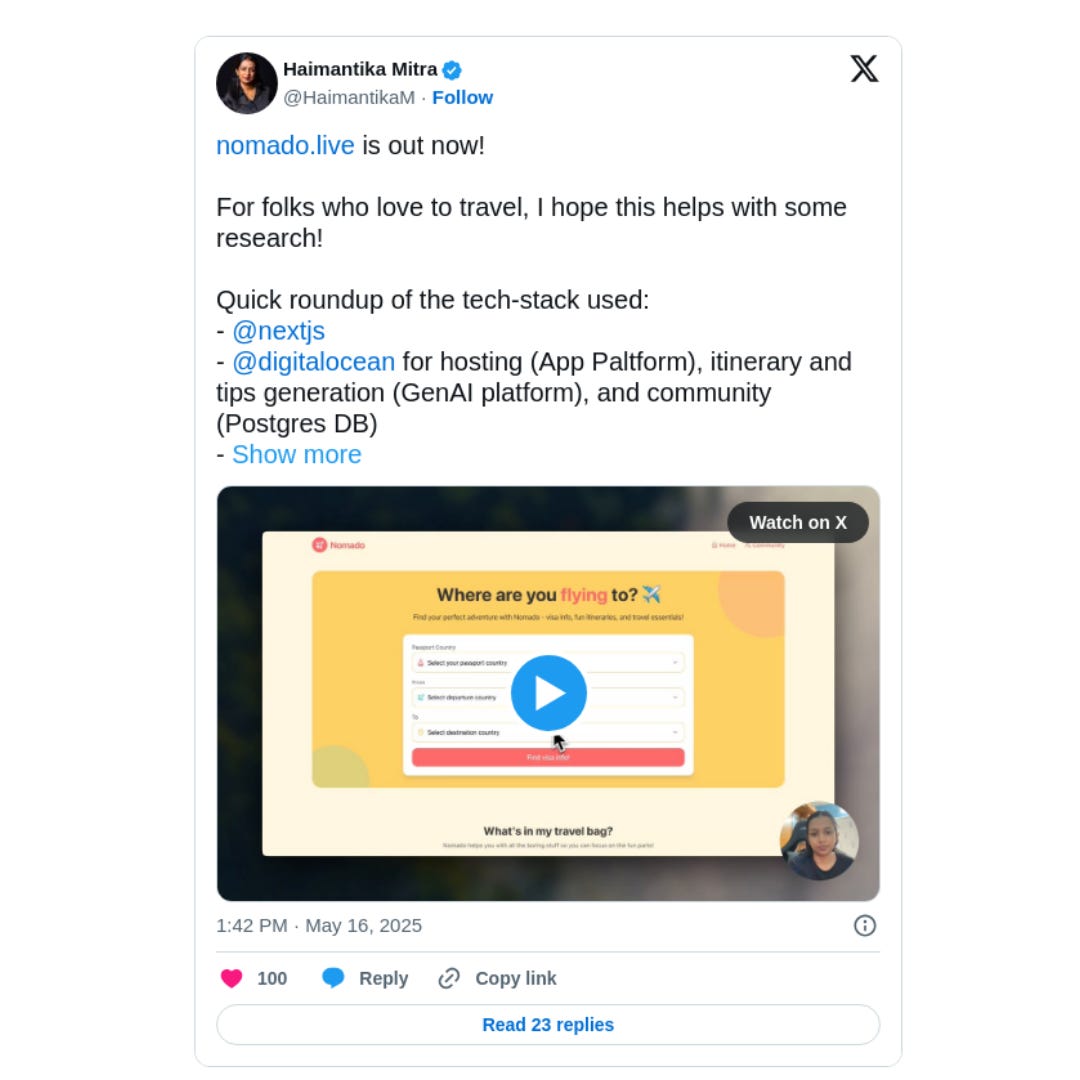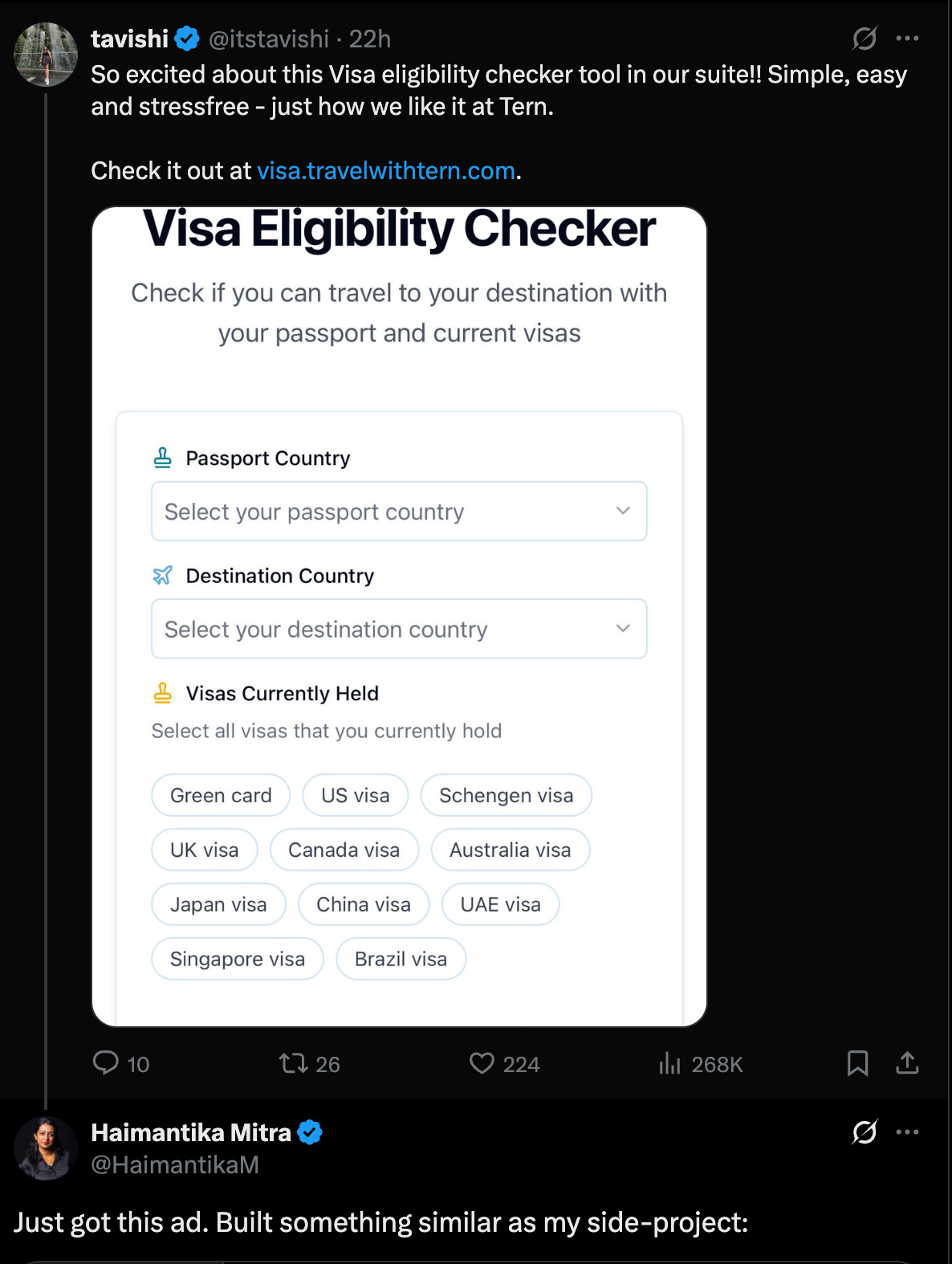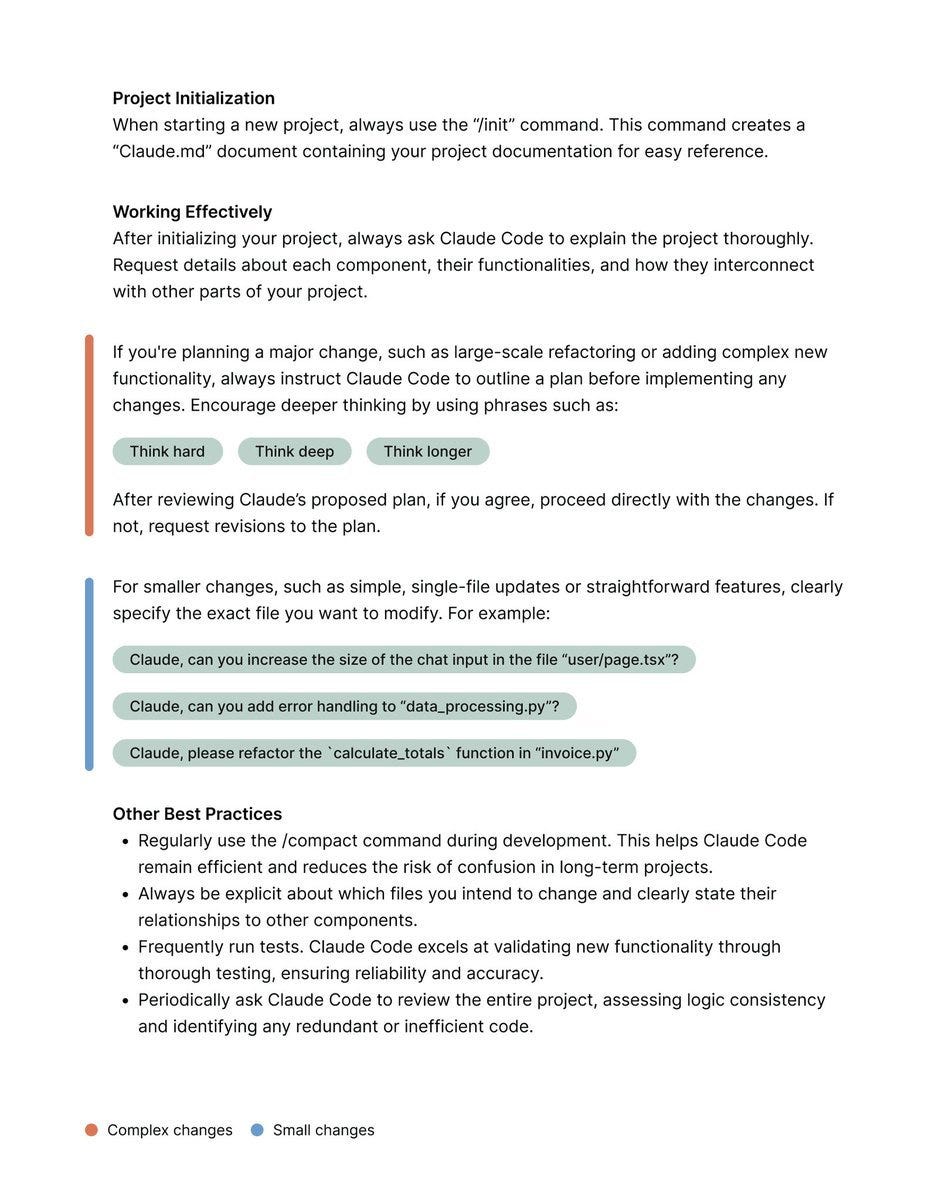How do I build cool projects?
Everybody wants to build and have that social media hit, but how do you actually do it?
I have been on a building spree since last year (mostly fun and stupid projects), though this is not my first time doing it. I did it a lot during 2020-2021.
I recently built nomado.live and it went a little viral (500+ active users with a global audience is viral to me), and if I had to say, it is one of those rare side projects that actually makes sense and is functional.
You can check out the video on my announcement tweet. Here’s a snapshot of the tweet:
What further validated my idea was a random ad I received from an SF-based founder. Her startup essentially does what my side project does, and this is a STARTUP!
Well, enough of self-eulogizing; all of this was to make you believe that I am really fit to rant about building side projects 😏 (not really, this is what most of my DMs are about).
Let’s get to the main content now.
P.S. - If you are interested to learn how this works (mostly an overview), you can checkout this article that I wrote for work.
How do I get these ideas?
This is a common question from college students, and as someone who was there not very long ago, I know how difficult it can be to get new ideas and move past the clones/common projects that we see online. In reality, building projects is not very easy, and the hardest part is coming up with an idea.
So I deal with it in two ways:
I use my funny side to think - I see a meme or something trending on X/LinkedIn (Instagram might not be the right choice for tech project-related memes), and then I think, “How can I use this meme to build something funny?” That is when I built the Chill Dev Analyzer, and this idea stemmed from my social-media viral project GitHub roast(credit for this idea goes to my friend Aditya Oberai).
I think of problems that I face or things I read about online (I cannot emphasize enough how reading random articles, newsletters, and discussions on X/Reddit forums has helped me). Nomado was built out of the frustration of applying for visas and being stuck in the endless loop of poorly designed government websites.
Bonus: Since my work also involves developer education and building with the products I align with in my company, I have developed a skill in thinking of ideas that cater to the right audience and also use my company’s tools
How do I actually build it?
Most of you reading this are developers or know how to code, so I do not need to get into the details of actually building it. What I can share is how you can use AI to build faster (something that I do).
I have a set of tools and rules set up, and these tips shared by Pietro are also great:
Coming to the tools I use (they may or may not be the best choice for you, but they can certainly help):
For frontend, I use Next.js and TailwindCSS. Since I use components from shadcn (design is not my forte), it already becomes easier. For further refinement, I use v0.dev.
It has been a month since I started using Cursor as my IDE. It does a few rewrites on its own, which can break your code even more, so as a precaution, you can write some rules. What I like about Cursor is that it supports MCP (so I can build my own or use existing ones like the MongoDB one for Database/DigitalOcean one for hosting), and it is contextual (not new for AI tools), but I also use it to write my README files, and it does a fairly good job at it.
That’s it for AI tools. You do not really need a lot of them to get the job done. One tip for getting the most out of AI is to prompt it to build section by section, instead of prompting it to build the whole app (a very bad idea, which can cause serious issues, especially if you do not understand the code it is writing).
How do I make money out of it?
Well, this is the part where I have no definite answers for you. I don’t build with money in mind; mostly, I build because I want to learn something or because it’s just fun. However, it would be entirely wrong to say that I have not made money from my projects. Many of my projects are open-source, and I link either my GitHub sponsors account or Buy Me a Coffee account, and to my surprise, a few people did end up sponsoring a few bucks (which is helpful in keeping up with the infra cost). For Nomado, I had a founder reach out to me on LinkedIn who was interested in buying and hiring me (but I had no intention to sell, so I let it go).
But one thing for sure that you should do once your app is built and before posting it on social media is to optimize SEO (you can take AI’s help here) and add some analytics (numbers always help).
How do I design the app?
I am not a designer, and my design sense is lacking, but I am great at developer experience. Most of the tools I build are catered to the developer audience I have, so it is easier to plan (since I have done this developer journey drill for almost 5 years now).
A few things for the developer audience:
Keep it simple.
If you want more people to try your app, skip login (if that’s an option), or try to make it really fast.
Plan a journey. Taking the example of Nomado, what would a traveler first do? Look for visa info, plan an itinerary, then look for special visa cases, and finally look at real feedback. So that’s the journey you need to design.
Figma is not my jam. Excalidraw is. I draw a really high-level diagram of what my app will look like and what the architecture will be. This helps me plan out the tech stack and break down the entire app into 3-4 sections.
P.S. If you are more focused on a proper UX research, this guide can be helpful.
How do I get the users?
The only “marketing” channel for me is social media (primarily X and then LinkedIn). Since I already have some audience there, it helps in getting organic outreach. I also share it with my close group of friends, who help in amplifying it. But if you are very new to all of this, what I will suggest is to make nice demo videos of your apps (use ScreenStudio if you can buy it), or just use Canva to make it look nice (people need to click). Then, along with sharing on social media, also share it in communities like “Build in public”. You can also post it on Product Hunt and Hacker News to see if you get some luck there. Finally, you can also publish projects on Peerlist’s Monday project spotlights. Doing these will help you get traction and also build an audience, which will help you in your future projects.
And that’s a wrap! Let me know what you think of this article and if you are going to use any of these tips for your next side-projects.




